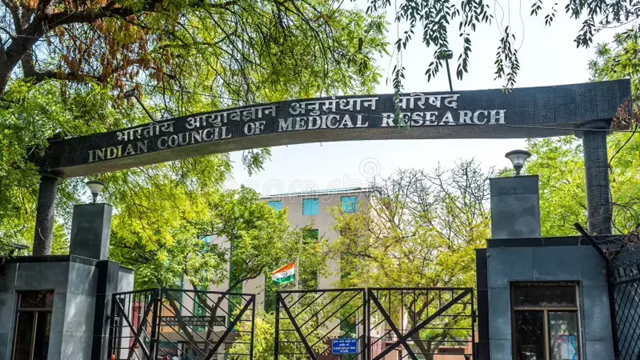
New Delhi: Researchers at the ICMR‘s National Institute of Epidemiology (NIE) in Chennai have highlighted the need for year-round and integrated surveillance of severe acute respiratory infections and influenza-like illness, which are potential threats to public health, to detect early warnings.
This comes in the view of a new public health study, published in ‘Discover Health Systems’ journal last month, which has revealed key insights into how Tamil Nadu monitors and responds to cases of influenza-like illness (ILI) and severe acute respiratory infections (SARI).
The study found that surveillance efforts are stepped up only during outbreaks or specific seasons, even though respiratory viruses circulate throughout the year.
The study evaluated the functioning of disease surveillance systems in four districts of the state from 2023 to 2024.
Engaging more than 370 stakeholders across 85 healthcare facilities and 23 laboratories, the study found that while Tamil Nadu has built a foundation for respiratory illness surveillance, further improvements are needed to make the system more consistent, routine, and capable of responding to emerging public health threats.
“This is the first study of its kind in India that provides evidence-based recommendations to strengthen disease surveillance at all levels,” said Dr Rizwan Suliankatchi Abdulkader, the principal investigator of the study, ICMR-NIE.
“Tamil Nadu has made significant strides in health surveillance. This report reinforces the importance of year-round, integrated disease monitoring to protect public health,” said Dr T S Selva Vinayagam, director of public health and preventive medicine, the Government of Tamil Nadu.
The study stated that more than half of the facilities surveyed had systems in place to report ILI/SARI cases, but only 42 per cent regularly collected clinical samples for testing. Besides, relatively few medical personnel had received specific training in identifying and reporting such cases.
Testing facilities were mostly concentrated in larger hospitals, with primary and secondary care facilities lacking necessary equipment and resources to conduct tests, Dr Rizwan said.
While public health centres widely used the Integrated Health Information Platform (IHIP), the system faced challenges such as inconsistent data entry, multiple overlapping reporting formats, and minimal participation from private hospitals and labs.
“The study also noted that surveillance efforts tend to intensify only during outbreaks or specific seasons, even though respiratory viruses circulate throughout the year,” Dr Rizwan said.
Influenza surveillance remains a seasonal event in Tamil Nadu, the study noted.
“With changing ecological conditions, efforts should be made to ensure year-round reporting of cases. Testing for influenza should be prioritised and infrastructure and testing for novel pathogens should be developed,” it said.
Although guidelines are in place, a gap still exists in awareness amongst the health workers, especially community health workers regarding the importance of influenza surveillance.
Structured training should be provided for trainers and there should be mechanisms for regular training of community health workers.
Frequent monitoring should be employed and structured feedback should be provided to ensure complete and accurate data for a better understanding of the disease trends. Involvement of the private sector in surveillance activities is evident but partial, the study said.
A ‘One Health’ approach should be adopted involving other sectors and data-sharing mechanisms should be in place ensuring transparency of data. With the plans already being discussed by the state, we may expect an improvement in surveillance standards for influenza soon, the study said.
Surveillance is the key to identifying and detecting health events in the community and it provides the scientific and factual evidence essential for informed decision-making and appropriate public health action, the study found.
Study participants identified several measures to improve surveillance, which included scaling up training for healthcare workers and community-level providers, improving digital infrastructure and mobile access to reporting platforms, expanding participation from private hospitals and diagnostic labs and engaging wide range of health workers such as mid-level providers and community volunteers.
Tamil Nadu has already taken steps such as introducing the Laboratory Information Management System (LIMS) to streamline sample collection and transport.
Plans are also in place to establish a “One Health” secretariat aimed at improving inter-departmental coordination and surveillance of zoonotic diseases, Dr Manoj Murhekar, director of NIE said.
These initiatives could boost the state’s ability to track influenza and other respiratory threats more effectively, he said.
The researchers recommended transitioning from seasonal to continuous surveillance of ILI/SARI. They also suggested boosting laboratory capacity and resources across all levels of care, offering regular refresher training to healthcare providers and establishing structured feedback loops and monitoring systems to improve data quality and reporting accuracy and conducting similar situation analyses across the country.
The study was supported by the Department of Health Research, Ministry of Health and Family Welfare, Government of India. The findings aim to guide state-level policy and improve the preparedness for respiratory disease outbreaks, including potential pandemics, said Dr Murhekar.
Respiratory infections are a major contributor to morbidity and mortality.
Globally, in 2021, an estimated 2.18 million deaths occurred due to lower respiratory tract infections (LRI), the study mentioned.
Influenza viruses were responsible for more than five million hospitalisations. The Global Burden of Disease study has estimated 98,200 deaths due to influenza globally in 2021.
Thirty-six per cent of worldwide deaths due to influenza occur in low and middle-income countries (LMICs). Influenza-associated mortality in India is higher among adults aged 65 years and above and children below five years.
The Southeast Asia (SEA) region is considered a ‘hotspot’ for emerging and re-emerging infectious diseases, especially those with pandemic potential.
The region has witnessed a significant increase in pandemic and epidemic-prone diseases in the last decade such as Severe Acute Respiratory Syndrome Coronavirus Infection (2002- 2004), Influenza A H1N1 2009 (Swine Flu), Middle East Respiratory Syndrome (MERS) infection (2012), and COVID-19 (2020- 2023) that have resulted in high morbidity and mortality.